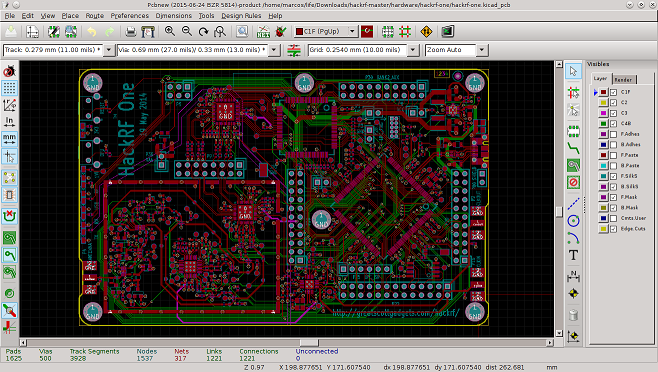In this last edition of the Project Leadership Series, we interview Javier Serrano, the coordinator for CERN’s contribution to KiCad Development. In this series, we aim to explore the various projects supported by the CERN & Society Foundation through the lens of the managers facilitating these projects.

Help us understand, what is KiCad?
KiCad is a free and open-source Printed Circuit Board (PCB) design tool. PCBs are the electronic cards you see when you open your PC, satellite receiver or TV set. These printed circuit boards are designed with a tool like KiCad and then fed into the production lines.
What is free and open-source software?
The word free is used with two different meanings- one is something that has zero cost and the other is about having freedom. In FOSS (Free and Open-Source Software) the F stands for Freedom - to look at the source code, to learn from it, to modify it, to share and improve on it and to share the modifications back. This gives you this virtuous circle of sharing where people improve things not just for themselves but for everybody.
How did KiCad begin?
A few years ago, there were lots of people interested in designing printed circuit boards who found a lack of high-quality PCB design tools of the free and open-source variety. Hence an effort was started to develop KiCad. It started with professor Jean-Pierre Charras, who wanted both a tool to teach electronics to his students, and also to learn how to code in C++. He put these two things together and started working on KiCad. From these very humble beginnings, KiCad has now become the de facto standard for PCB design in many communities.
Why is KiCad needed?
Before KiCad, any person wishing to share their open hardware designs could definitely do so, but this was mostly done using proprietary tools. In order to open these files and edit them, one needs access to the same tool the design was made in. This caused a lot of friction in making PCB designs open hardware. The best solution to this was to have a free and open-source software tool that everybody had access to. This way, when someone wanted to publish their open hardware designs, they could ensure that nobody would have this hurdle of acquiring a proprietary tool to open their designs and modify them. In fact, some of the proprietary tools now have the option of importing KiCad files in order to modify and improve these open hardware designs.

Where is KiCad now and where does it want to go?
We are trying to make KiCad as high quality and fully featured as possible. As of now, KiCad has hit its initial goal of becoming good enough to become the de facto standard for hobbyists who produce relatively simple designs and want to share them with the world.
The next phase is a corporate user, who designs relatively complex PCBs. We are working with the drawing office at CERN to analyse what can be improved and then we use the donation money from the CERN & Society Foundation to fund the development of these features.
Who works for KiCad? How is it developed?
When we started, little to no KiCad development was happening at CERN. We did begin to have a full-time person (Maciej Sumiński) working on KiCad development for a few years with help from the Knowledge Transfer fund. His work and that of Tomasz Włostowski were instrumental to bring KiCad to its current state. After that, we gradually switched to this new way of working where we subcontract work to other lead developers in KiCad. These developers are coordinated by the KiCad project leader Wayne Stambaugh from the US. We use the donation money to pay them to implement new features and we supervise this work to merge it into the master branch of KiCad.
What’s the long-term goal?
I think KiCad will be sustainable when it receives commercial support from companies that can help fund its development. One interesting development has been the founding of KiCad Services Corporation by one of the lead developers, which now employs KiCad’s project manager. I expect the coming three years are going to be very interesting!
You too can contribute to KiCad Development by supporting the project with an online donation.